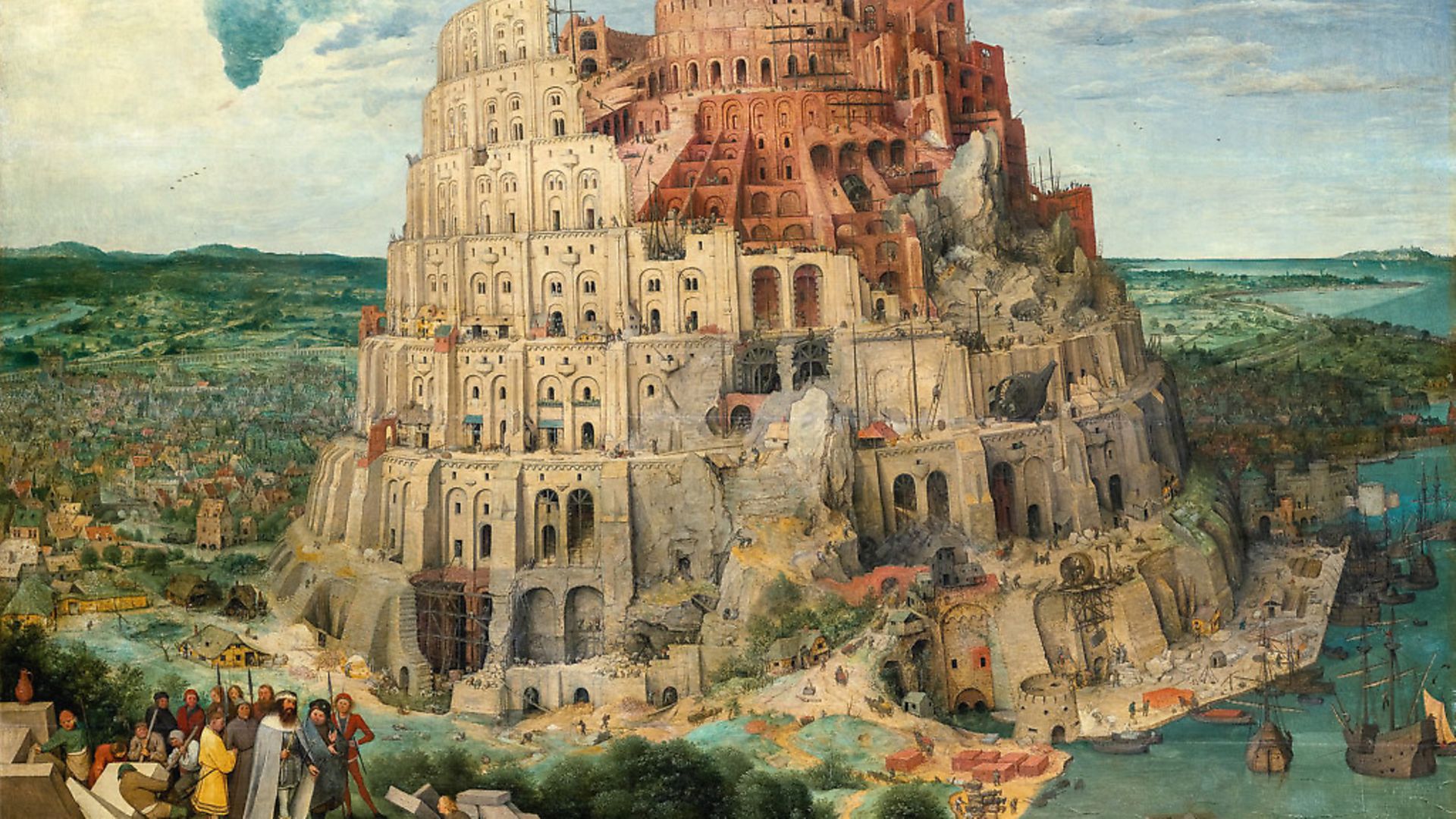
A once-in-a-generation exhibition, featuring most of Pieter Bruegel the Elder’s surviving works, shines new light on a painter the world was slow to appreciate, ALASTAIR SMART reports.
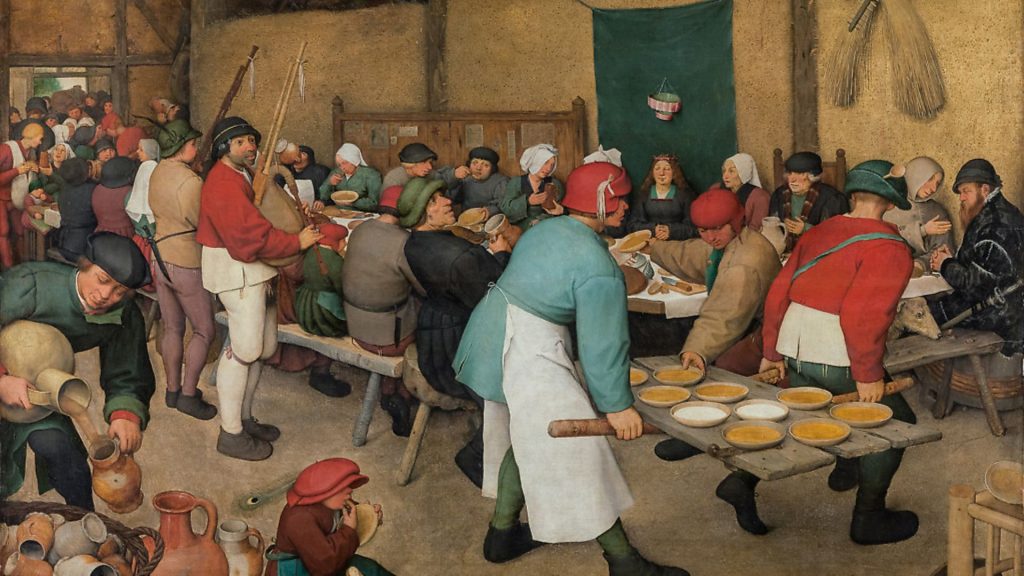
Precious little is known about the life of the great Netherlandish painter, Pieter Bruegel the Elder. He was born some time between 1525 and 1530, in some place between Breda and Antwerp. His era was one of religious turmoil (the Eighty Years’ War starting shortly before his death), yet we’re not sure whether he was Catholic or Protestant.
What, then, do we know about him? Well, we know he worked in Antwerp and then Brussels; and also that he had two sons – Pieter the Younger and Jan – who’d both become renowned painters in their own right (if never in their father’s league).
Around 40 of his paintings survive, and 28 of these can be seen in a remarkable exhibition that has just opened at the Kunsthistoriches Museum (KHM) in Vienna. Unprecedented loans from around the world – supplementing the Bruegels that belong to KHM already – result in what its organisers, justifiably, are calling a ‘once-in-a-lifetime show’.
Given the fragility and value of the extant paintings, nothing close to an exhibition on this scale has been staged before. (More than half of the artist’s surviving prints and drawings are thrown in for good measure.)
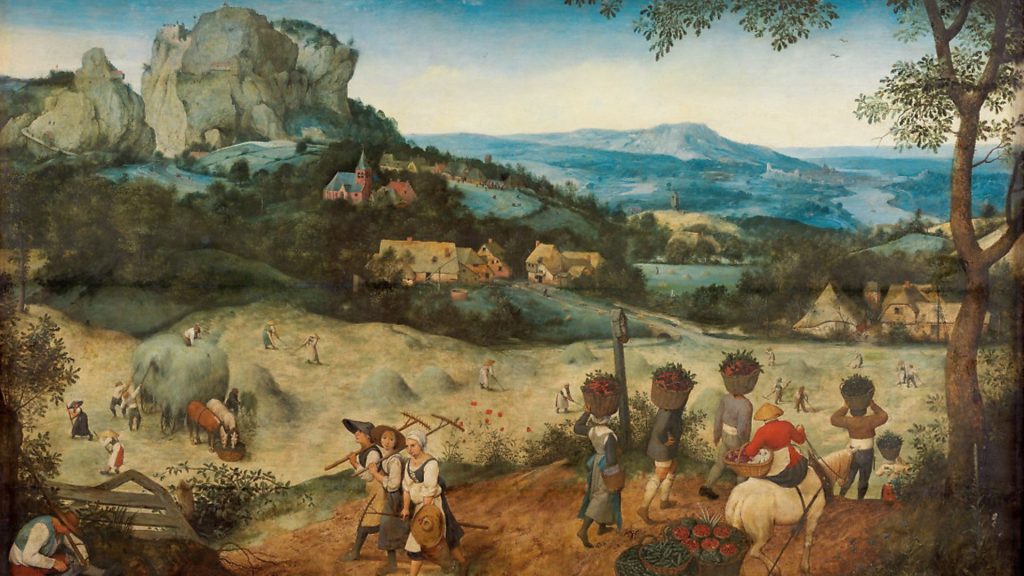
It’s hard to know where to start when it comes to what made Bruegel special. Certainly, he was the greatest painter of snow in history, capturing it so richly white and in such thick, glistening glory you just want to jump into the pictures for a play. No wonder works such as Hunters in the Snow have been a fixture on Christmas cards for decades.
He also has few equals when it comes to telling detail. Take Tower of Babel, depicting the Old Testament story of mankind’s attempt to build a tower that reaches heaven. The edifice is colossal, yet Bruegel still manages to minutely capture the labours in its construction – from bricks being loaded off boats to wooden joists being lifted on cranes.
One really needs a microscope to view all that’s going on in Bruegel’s paintings. (It’s thought he studied as a youth under the eminent, female miniature painter, Mayken Verhulst.) KHM has helpfully just launched a website – www.insidebruegel.net – which allows visitors to zoom in on sections of Bruegel’s scenes like never before.
And then there’s his pioneering of ‘cinematic’ tricks and devices, even though he lived centuries before cinema was invented. ‘He leads your eye around his paintings in exactly the way he pleases,’ says exhibition co-curator, Ron Spronk. ‘It’s a practice that countless filmmakers have copied since, grabbing the viewer’s attention in one spot and then ushering you – with a kind of rhythm – to another spot entirely’. The key difference, though, is that Bruegel didn’t have a nifty film-camera to tilt, pan or truck. He simply had a paintbrush.
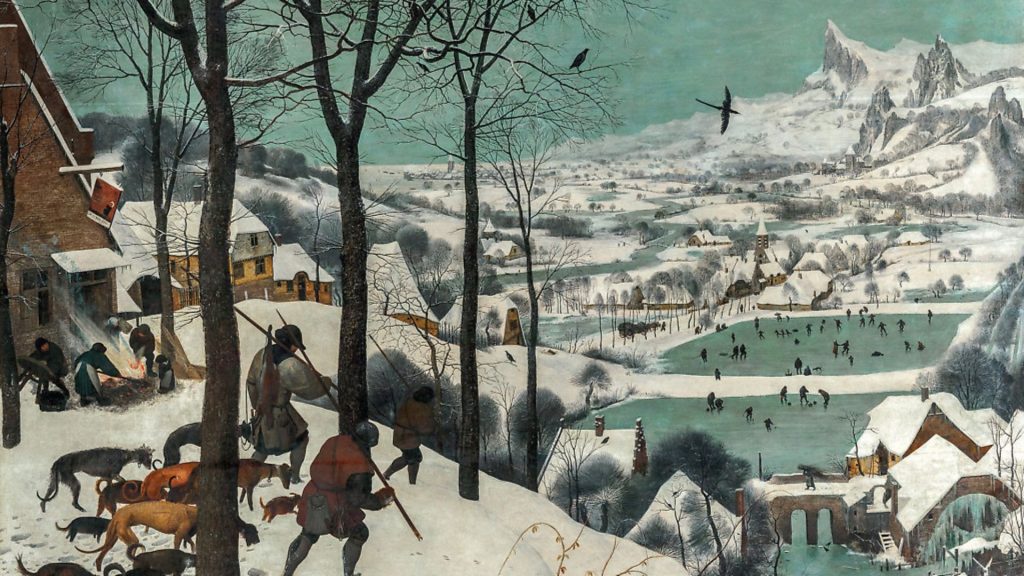
In Haymaking, we spot first a group of market-goers in the foreground, each carrying a basket full of cherries to be sold; next, we follow the winding path they’re on, down to a tranquil village (on either side of which workers are making hay). Then, finally, our gaze is raised to a rocky outcrop in the background left, which towers over everything.
This is one of half a dozen landscapes that form part of Bruegel’s 1565 series: The Seasons. They depict scenes from six different periods of the year – in Haymaking’s case, early summer – and KHM’s exhibition marks the first time in 350 years that four of them have been hung together. (Sadly, the painting known as Spring was lost in the 17th Century, while Harvesters, which marks late summer, hasn’t travelled from the Metropolitan Museum in New York).
The Seasons was commissioned by banker, Nicolaes Jonghelinck, for the dining room of his country residence outside Antwerp. Jonghelinck was typical of the discerning, discriminating sort of patron Bruegel attracted. Others included Antoine Perrenot de Granvelle, the Archbishop of Mechelen; and the cartographer Abraham Ortelius, who said of Bruegel after his death in 1569: ‘That he was the most perfect painter of his age, no one – unless jealous, envious or ignorant – could ever deny’.
Such an opinion wasn’t shared by much of posterity, however. For centuries, Bruegel didn’t have a reputation to speak of. He wasn’t deemed worthy of inclusion in Sir Joshua Reynolds’ famous Discourses, for instance, in which the Royal Academy’s first president extolled the virtues of numerous Old Masters.
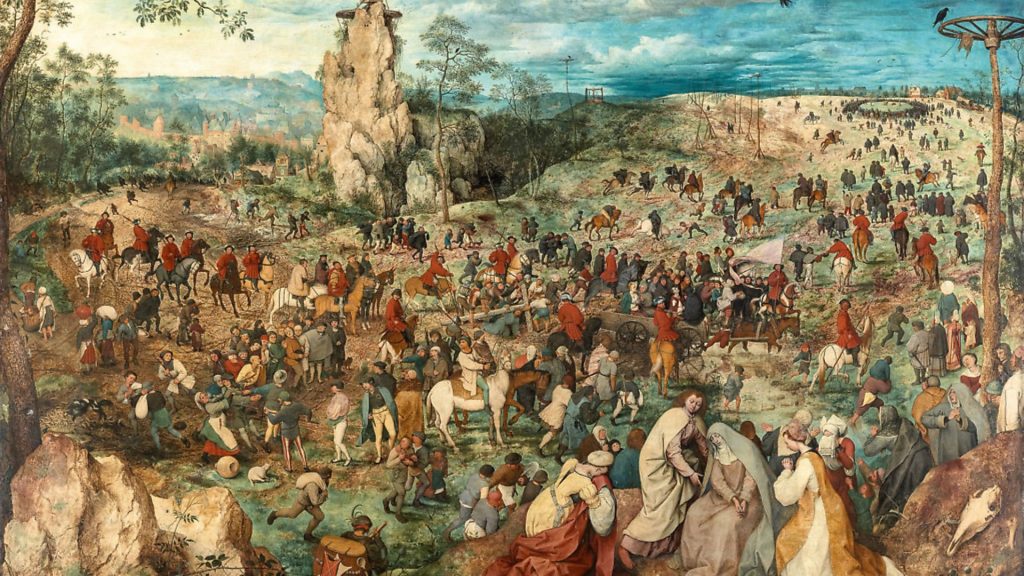
Much of the blame lies with his first biographer, Karel van Mander, who concentrated overwhelmingly on the fraction of Bruegel’s output – such as The Drunk Cast into the Pigsty – that consisted of jolly peasant scenes. He dubbed the artist ‘Pieter the Droll’ and argued ‘there are few works by his hand that the observer can contemplate with a straight face’.
It took until the turn of the 20th century for proper study of his oeuvre to begin and for Bruegel to be considered a major artist who ought to be taken seriously. He could paint biblical scenes just as capably as peasant ones, none more striking than Christ Carrying the Cross, in which he set out a vast panorama between Jerusalem and Calvary.
Hundreds of people go about their business (from pickpockets and bread-sellers to children larking about in puddles), and barely visible at the centre of them all is Christ. En route to the hill of his crucifixion, he has collapsed, exhausted, under the weight of his cross. Few seem to even notice him, let alone appreciate the world-changing impact of what’s occurring in their midst.
In terms of posthumous artistic status, Bruegel has never benefited in the way his Italian peers have from association with a centre of great learning: Renaissance Florence in Michelangelo’s case and Renaissance Venice in Titian’s. The exhibition curators are at pains to point out, though, that Antwerp was far from a backwater. In fact, in Bruegel’s day, it experienced a golden age. One of Europe’s principal ports, it welcomed so much cargo from Asia and the Americas that an estimated 40% of world trade passed through it.
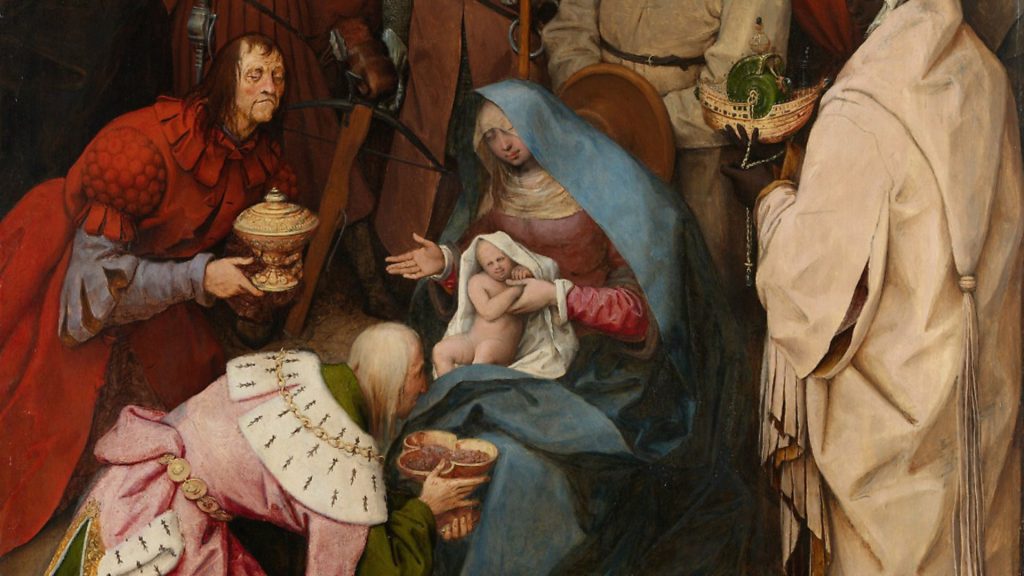
All of which is fair enough – but, to a large extent, Bruegel’s art transcends time and place. Few artists have captured human nature more convincingly – or more completely. His scenes often teem with figures, who reveal a spectrum of moods and characters. In Christ Carrying the Cross, even the handful of people who notice Jesus react with a mix of bewilderment, curiosity, fear and – in the case of the man pelting him with stones – spite.
Perhaps the most Bruegel-esque work of all, though, is Peasant Wedding. In traditional painting, figures weren’t depicted eating; seen at a table, yes, but not in the act of consuming what’s in front of them. Bruegel took relish in breaking with that tradition, and here depicts two wedding guests with spoons in their mouths, one with a jug to his lips, and a child keenly licking his fingers. He was an absolute master of keeping things real.
Bruegel is at the Kunsthistorisches Museum, Vienna, until January 13, 2019 – visit www.bruegel2018.at/en. The exhibition’s four curators have also collaborated on a major book, Bruegel: The Master, which has been published by Thames & Hudson, at £42; visit www.thamesandhudson.com









